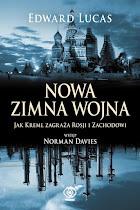Chained ghosts
Aug 7th 2008
From The Economist print edition
The Forsaken: An American Tragedy in Stalin's Russia
By Tim Tzouliadis
Penguin Press; 436 pages; $29.95. Little, Brown; £20
PARANOIA and exhibitionism, two of the defining characteristics of the Soviet system, make a nasty mix. It was the Soviet Union’s desire to crow over depression-stricken America that encouraged it to let hundreds of workers, desperate for jobs and a new start in life, immigrate there in the early 1930s. Exactly how many nobody knows; almost all ended up in mass graves. Initially lauded as welcome refugees from the miseries of capitalism (and as useful specialists who might help replicate the bits of it that worked, such as factories) from 1935 onwards they became enemies of the people, infiltrators and spies. A tiny handful, such as Paul Robeson, a singer, were tolerated as propaganda trophies. The rest sank into a living Hades of torture, rape, slave labour, starvation, frostbite and death, shared with millions of others.
The horrors of the Gulag ought to be as well known as Auschwitz, but they aren’t. Tim Tzouliadis includes many of them in his sprawling narrative. His statistics are sometimes sloppy and he seems barely aware that for most of its people the Soviet Union was already a hell-hole, even when the American workers were happily playing baseball in Gorky Park.
The real value of his book is in chronicling the extraordinarily supine behaviour of American bureaucrats and politicians towards the fate of their fellow-countrymen. Even before their arrest, most of the Americans were, in effect, prisoners: with their passports confiscated they were involuntary Soviet citizens. But the only people who might have helped saw no reason to do so. Diplomats in America’s newly established embassy in Moscow regarded all the migrants as communist sympathisers who had thrown in their lot with the system. Some were, but many were not. Yet the diplomats put every obstacle and delay in the way of desperate people who were risking instant arrest for even contacting the embassy, for example by demanding that fees for replacement passports be paid in dollars at a time when possession of hard currency was a criminal offence.
Equally astonishing was the lack of even a single squeak of protest. America’s ambassador, Joseph Davies, was an idle, gullible, Stalin-loving art collector. When the case of a missing American was half-heartedly raised by a subordinate, he promptly apologised to the Russians. Even when Americans working as locally hired staff at the embassy were arrested, nobody complained. George Kennan, a diplomat, eventually realised what was happening and wrote an eloquent memo. But nobody acted.
If the diplomats look bad, so too do the Moscow-based foreign journalists, who shunned the story as liable to risk their official accreditation; the debaucheries on offer nightly at the Hotel Metropol, courtesy of the NKVD secret police, may have led them to choose their own livelihoods over the lives of others.
The outbreak of war would have been a chance to ask for Stalin’s co-operation. Allied pressure brought a ragtag army of starving Poles from the depths of Siberia. But nobody cared about the Americans. President Franklin Roosevelt and his advisers emerge remarkably badly on this issue, seemingly determined not to bother Stalin with such trifles.
The most revolting and murky twist to the story is the treatment of another wave of American captives: prisoners-of-war in Germany who had the misfortune to be freed by Soviet troops and were deported to the Gulag. Clues abounded, chiefly from defectors and former Gulag inmates who reached the West. Yet the files remained secret. Neither their fate, nor that of Americans captured during the Korean War, received attention. The American Red Cross brushed aside a request to intervene, saying that inquiries about Americans “domiciled” (hardly the right word) in NKVD camps would be a source of “annoyance, if not embarrassment”.
A handful of survivors returned to tell their story to an often disbelieving public. Mr Tzouliadis has unearthed scandalous nuggets from the American archives. In that sense, he is right in his comforting assertion that “the truth, although it may be initially disbelieved, will always surface eventually.” But in another sense he is wrong. Even if the Russian archives were to yield everything they contain about the American names that so tantalisingly surface in his book, other questions would remain unanswered. When the eyewitnesses, perpetrators and victims are all dead, the real story of a crime dies too.
You are here: Home > Russia > Americans in the Gulag
Thursday, August 07, 2008
Americans in the Gulag
Posted by
Edward Lucas
at
10:10 PM
![]()
Labels:
book reviews,
Russia
Social bookmark this post • View blog reactions
Translate: Portugues | Francais | Espanol | Deutsche | Italiano | Chinese | Korean | Japanese
Subscribe to:
Post Comments (Atom)
























No comments:
Post a Comment